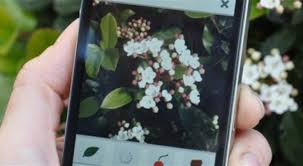
Breaking News
 BREAKING: Secret Study Conducted By Henry Ford Health Conclusively Proves...
BREAKING: Secret Study Conducted By Henry Ford Health Conclusively Proves...
Discovering Gems of Understanding
 Trump's Corporate Favor Factory
Trump's Corporate Favor Factory
 Google Quantum Supremacy And Artificial Intelligence
Google Quantum Supremacy And Artificial Intelligence
Top Tech News
 Graphene Dream Becomes a Reality as Miracle Material Enters Production for Better Chips, Batteries
Graphene Dream Becomes a Reality as Miracle Material Enters Production for Better Chips, Batteries
 Virtual Fencing May Allow Thousands More Cattle to Be Ranched on Land Rather Than in Barns
Virtual Fencing May Allow Thousands More Cattle to Be Ranched on Land Rather Than in Barns
 Prominent Personalities Sign Letter Seeking Ban On 'Development Of Superintelligence'
Prominent Personalities Sign Letter Seeking Ban On 'Development Of Superintelligence'
 Why 'Mirror Life' Is Causing Some Genetic Scientists To Freak Out
Why 'Mirror Life' Is Causing Some Genetic Scientists To Freak Out
 Retina e-paper promises screens 'visually indistinguishable from reality'
Retina e-paper promises screens 'visually indistinguishable from reality'
 Scientists baffled as interstellar visitor appears to reverse thrust before vanishing behind the sun
Scientists baffled as interstellar visitor appears to reverse thrust before vanishing behind the sun
 Future of Satellite of Direct to Cellphone
Future of Satellite of Direct to Cellphone
 Amazon goes nuclear with new modular reactor plant
Amazon goes nuclear with new modular reactor plant
 China Is Making 800-Mile EV Batteries. Here's Why America Can't Have Them
China Is Making 800-Mile EV Batteries. Here's Why America Can't Have Them
New App Aims To Be The "Shazam" For Plants By Identifying Species With Just A Photo

While it may not theoretically be a new app, PlantNet has just recently garnered attention as a result of successful updates that have exponentially increased its downloads. It was released last summer and has continuously improved its database to be more inclusive and accurate to help users.
PlantNet is an app that can identify the plant you're looking at based on a photo you take of it, making it the "Shazam" for plants. While image-matching is extremely difficult, considerably more than audio-matching like Shazam does, it's made easier when it's at least just limited to one, albeit immense, category: plants.
The app is meant to help identify wild plants for those that are out and about and find themselves wondering what species they're looking at, but it's being expanded to include domestic plants. With 6,400 plants in its database so far, the app is increasing its effectiveness and works by matching the picture you snap with the thousands in its database to find the plant you're looking at. Since the app uses your location (if you allow it to), identifying wildflowers is made easier by narrowing down what plant it could be by first narrowing down the region.

 China Innovates: Transforming Sand into Paper
China Innovates: Transforming Sand into Paper

